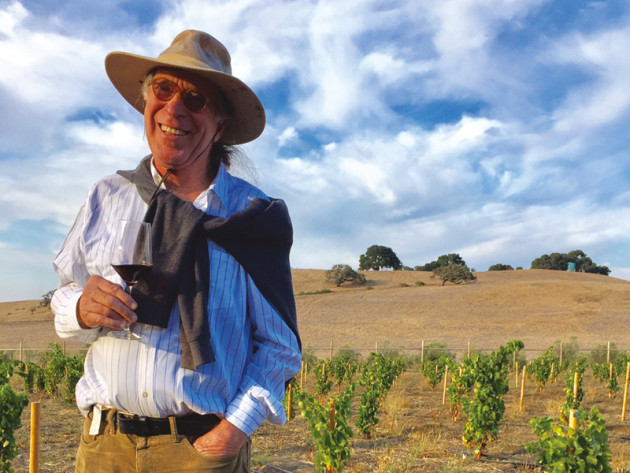
Q&A: Randall Grahm, Popelouchum
The original freewheeling California innovator talks to Andrew Catchpole about his new venture and an endless quest for terroir
Let’s start with your beloved Citroën DS – what does this affair with quirky French automobiles say about you?
I don’t know. Frankly, it was like love at first sight. When I first saw the DS I couldn’t even put into words how much I fell in love with that vehicle. And, to my great fortune, Santa Cruz was a perfect place to own one, because there was a parts depot for North America. So this is like ground zero for Citroën in North America, the last outpost, kind of like the Alamo.
Tell us a little more about your Popelouchum project?
It’s multifactorial. I’ve always admired the idea of a vin du terroir, a wine of place – those are the most interesting wines, the wines that matter. And the problem is, how do you make a wine like that in California? I’d been stuck for quite a long time thinking how the hell does anyone try to do this in the space of a lifetime? You’re not going to get the variety right, you’re not going to get the right match, optimally congruent [with the site], and you’ll probably fail. So why bother? I came up with a potentially unique methodology. The idea I’m working on basically asks the question: how are we in the New World going to make wine that rivals Old World wines’ complexity and nuance and interest?
So how do you?
One is a technique which I call varietal auto-tuning, where you start with varieties that work well on your site, but what you try to do is create greater congruity between the biotypes you’re growing and the site itself. So there’s really two ways of going about it. One is if you do self-crosses. A fair number of offspring are flawed and don’t grow right, but you can use this as an advantage. There’s the opportunity to find the small percentage of unique varieties that, for whatever reason, seem to be better suited to the site than the parents.
The other interesting opportunity is that, potentially, by deconstructing the genetics of a variety, you’re not counting on getting every single thing you want from a single genotype, but getting qualities from multiple genotypes. For example, with Serine [a northern Rhône clone of Syrah], you may find that one biotype has more structure, another more tannins, higher rotundone or floral quality, or whatever. So by identifying half a dozen unusual biotypes that emerge and then figuring out [if you] can reconstruct a wine based on a composite of the different elements. You might want 40% of the high rotundone, 20% of the floral violet one, 10% of the structured one, 10% of another one... leading to a unique wine. I’m focusing on creating and building complexity. It’s a new, novel way of thinking about building a wine.
And how does this help express terroir?
Something happens when you make a wine from a genetically complex blend. You essentially have the effacing of strong varietal characteristics, which allows the opportunity for secondary characteristics to work – the soil characteristics. Which is actually the strategy for the second method, which is the creation of new varieties from scratch, and making an extremely heterogeneous blend. In this case, by breeding new varieties, you’re not going to be creating from disparate gene pools and disparate lineages, you’ll actually have stronger vines, and you’re also going to have a genetically super-diverse mix. And in virtue of that genetic diversity, I believe you’re going to have a suppression of varietal characteristics, which allows for the emergence of soil characteristics, which is what makes wines interesting.
Not all varieties are noble, but some are still capable of making interesting wines, because they act as carriers of certain characteristics. Think of the variety Chasselas – literally the Switzerland of grapes – or Listan Negro in the Canary Islands, which is related to the Mission grape, arguably the worst vitis vinifera grape ever conceived. Nevertheless, both cases are able to make extremely interesting wines in the presence of strong soil characteristics. If you have a strong terroir, one argument is you’re going to make an interesting wine pretty much no matter what you grow.
How long will it take to get to where you want to be with Popelouchum?
Probably another eight to 10 years.
You’ve had an asteroid named after you. What else would you like to achieve?
If I can make this financially sustainable, that would be satisfying. Enough to have my Citroën repainted, that would be really nice…
If you had to up sticks to another part of the world, where would that be?
Probably Liguria. I’m pretty taken with a funny grape there called Rossese, which I think may be the answer. And Liguria is pretty close to Piemonte, which is a viticultural and gastronomic paradise.




